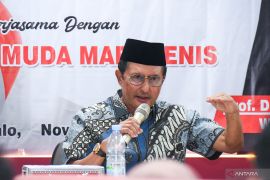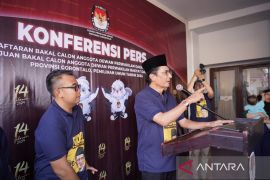"As one of the ways to develop seaweed as a premier marine commodity, the ministry has provided 60 clusters in order to produce 10 million tons of seaweed by 2014," Marine Affairs and Fisheries Minister Fadel Muhammad said in a press release received by ANTARA here Friday.
Fadel said the ministry would take two steps to increase production of seaweeds in Indonesia, specifically reduction (to expand farming units) and intensification (to add to total production of every farming unit).
He also said the intensification was conducted by recording the potential area either in bays or waters in Indonesia.
"There are 4.5 million hectare areas in our country nowadays," said the Minister.
Besides, the Ministry had worked with some local administrations and private companies to build 12 clusters of seaweeds which were located in Sumenep (East Java), Gorontalo, Pangkep (South Sulawesi), Dompu (West Nusa tenggara), Serang (Banten), Riau, North Minahasa, Parigi Moutang (Central Sulawesi), Polewali Mandar (West Sulawesi) and Bau bau (Southeast Sulawesi).
Fadel also confirmed he would limit the dried seaweeds export in 2012 to sustain the domestic industry process growth.
He said, until 2008 some of the seaweeds export was sent in dried form and not be labeled by any Indonesian companies.
"The Ministry has prepared three options of policies on developing seaweeds process. First of all, the exporter must be registered and have processing factories in Indonesia. The second, the government limits the number of dried seaweeds exports. And the last policy is that the government empowers Indonesian cooperatives to export the seaweeds," he said.
Every year, he added, the production of seaweeds in Indonesia was one of the biggest contribution fisheries farming units due to the amount which was increasing each year.
Data from the Ministry showed that in 2010 the seaweeds production in Indonesia reached 3.082 million tons, or increased 2.574 million tons from 2009.
Meanwhile, during the 2011 to 2014 the production was predicted consecutively to achieve 3.504 million tons, 5.1 million tons, 7.5 million tons and 10 million tons in each year.
(*)
Editor: AA Ariwibowo
Copyright © ANTARA 2011











